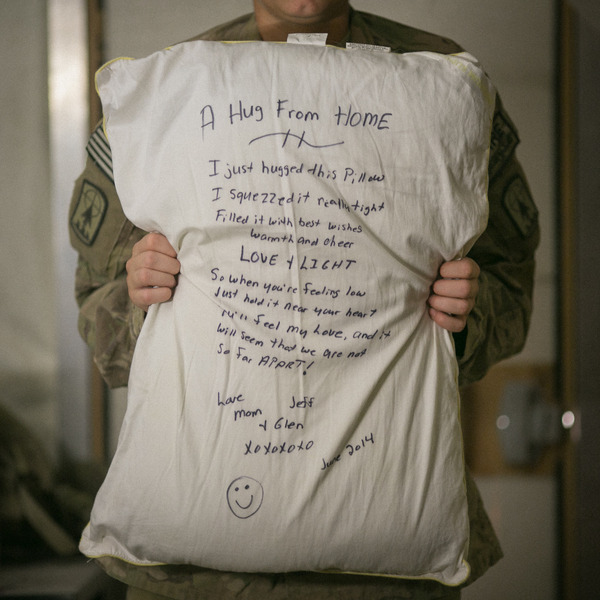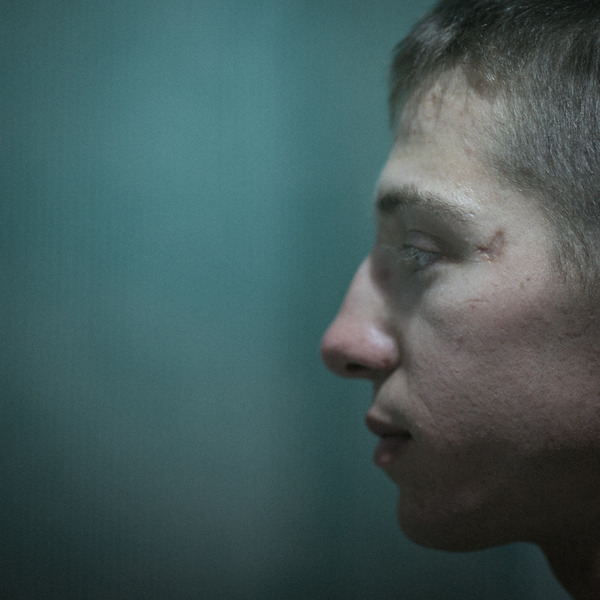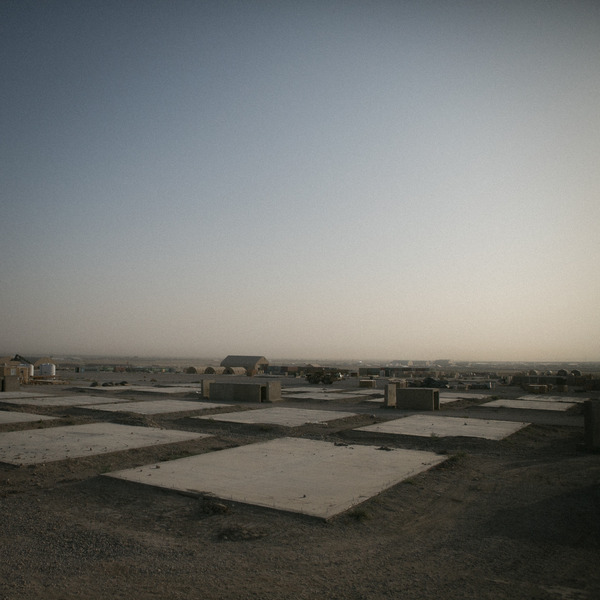My time spent in Afghanistan in the summer of 2014 was for a newspaper assignment. During any off time, I worked on the following series: an attempt to illustrate the process of packing up the war in Afghanistan--what comes home in shipping containers and what comes home in duffel bags, backpacks and minds. The following images remain unpublished, and a very small slice of the drawdown effort.

The skeleton of what once was an aviation maintenance tent--former housing for Blackhawks, Chinooks and Apaches among other military rotary wing aviation vehicles at Camp John Pratt, Afghanistan.

LMTV (light medium tactical vehicles) sit in a lot at Camp Marmal, Afghanistan waiting to be shipped to Red River Army Depot in Bowie County, Texas.

This stays on my nightstand," says Specialist Erica Steinke, cradling a Desert Storm bible that once belonged to her father--a gift from him to her right before her deployment. "It means knowing God is watching over me, and also having a piece of my dad with me. I'm named after him, you know? It's really special to me." Steinke says that if she has children in the military, she will pass it on to them.

Specialist Laura Van Remortel had a sore neck her first few weeks in Afghanistan. She wrote home asking her mom to send her a pillow out of practicality. "I opened the box and started crying." The pillow now lies under her head every night. "I'm gonna cut it out and frame it when I get home."
![Mattresses, wires waiting to be stripped, air conditioners and other [things] from housing units sit in a Retro Sort Yard at Camp Marmal, Afghanistan.](https://s3.amazonaws.com/samexhibit/production/images/186539/06b83bdecf8317786af40406e476a04361fe5581_large.)
Mattresses, wires waiting to be stripped, air conditioners and other [things] from housing units sit in a Retro Sort Yard at Camp Marmal, Afghanistan.

An empty Italian restaurant in the Norwegian section of Camp Marmal. Imprints on the ground where tents once stood sit in front of the restaurant.

A month in to his deployment, Pfc. Derek Shaw thought he had a bad headache...then things got worse. Throbbing pain and sores lead to a diagnosis of shingles and a week at the base hospital. "When I get home and see the scar I'll just think 'wellp, still there. I got the shingles in Afghanistan.'"

Concrete slabs where "Alaska tents," or housing units, once stood at Camp John Pratt, Afghanistan.

"I've been working on it about a week, I guess." Sergeant Levi Rhody found the piece of wood on a job site, and during down time has worked to transform it from a scrap to a man. "When I see it at home, I'll think of my awesome squad."

Specialist Kassondra Hovde is playing a game of back-and-forth with her two-year-old daughter, Rhilyn. Hovde bought the bear for Rhilyn at Fort Bliss, TX, but two weeks in to her deployment in Afghanistan, the bear showed up in a care package. "She gave it a hug and put it in a box to send to mommy," says Hovde. "I'm a single mom so I went from seeing her everyday to not seeing her at all, but I just try to focus on all the fun stuff we can do together when I get home." Hovde shows Rhilyn the bear over Skype, and the bear will return back to Rhilyn when Hovde comes home.

Concrete t-walls sit unused on the outskirts of Camp John Pratt.

Concrete t-walls and concrete slabs sit around a helicopter landing space.

Specialist Nate Hitchcock didn't have a piece of paper when the urge to "doodle" hit him at Camp McGregor back in April, so he used what he had: a piece of cardboard and a sharpie. First the gun materialized, then the soldier. "I drew it on my deployment. I've taken it everywhere, and will take it everywhere."

"We were putting up a tenting site for contractors at Marmal when this caught my eye," says Medic Patrick Blaesing holding a rock. "I found a local national who told me it says 'Long life Afghanistan.' Hopefully thats actually what it means!" he laughs. "To me, it is a small symbol of the hope for and in this country."

An empty tent that once belonged to engineers at Camp Pratt, Afghanistan.

Where a contractor firehouse once stood on Camp John Pratt, Afghanistan.